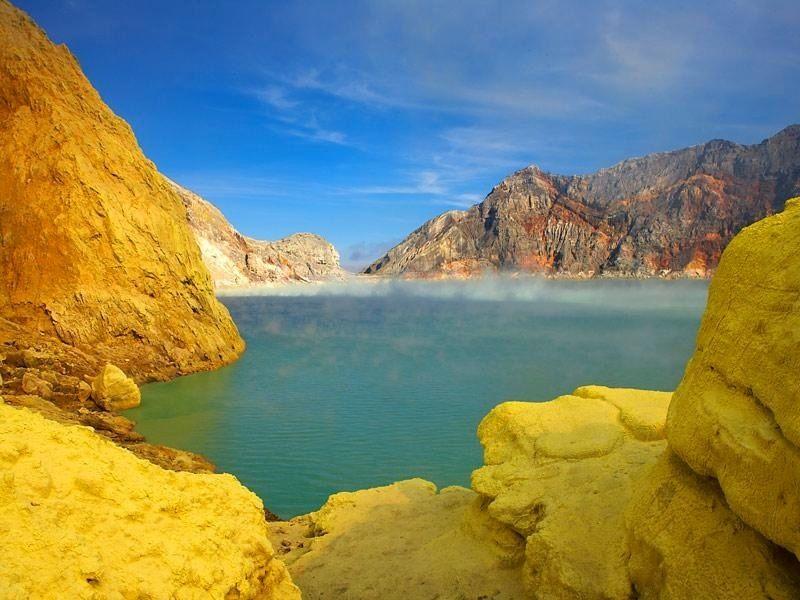Sulfites in Wine - Dynamis
To start with, what is the use of sulphur in wine?
Sulphur dioxide (SO2) has anti-oxidant and anti-septic qualities that help the wine to preserve its taste and prevent it from oxidation; it also helps avoid further fermentation in the bottles due to yeasts and bacteria.
It should also be noticed that all living beings contain sulphur and that yeast is naturally produced during the alcoholic fermentation.
Why does the sulphur cause headache?
The majority of sulphur currently used in the winemaking industry comes from Oil. The petrol is nothing more than mineral oil with organic origin.
The problem is that the sulphur is extracted after refining the oil using sulphuric acid (up to 90% of sulphur, so called vitriol that is usually used in the acid batteries...). By using the splash-hydrogenation technique against the flow of gas in an amine solution, the elements such as hydrogen sulphide (H2S) / carbon dioxide (CO2) fix the sulphur with the aid of the cobalt molybdenum (a stabiliser usually used in dental treatments but it is becoming more and more evident that it is not an environment friendly product.)
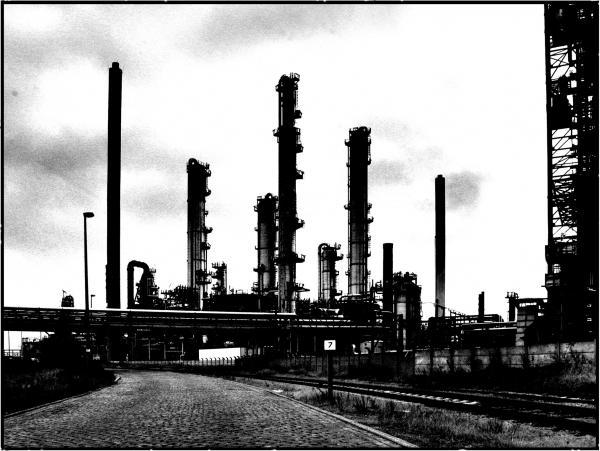
Factory generating pollution... | Petrochemical Plant - Porte d'Anvers (Belgium) © Janicks
Using an aluminium base, the hydrogen sulphur and carbon dioxide undergo a catalytic operation at 300°C. Under a pressure of 70 bars, we raise the temperature of the mixture to 200°C and we mix it with diethyl-amines (an extraction based of alcohol and ammonia; it is also used as a corrosion inhibitor and in the fabrication of dyes and resins). Finally these gases are sent up in a regenerating column (60 to 100 meters). A mixture of H2S-CO2 is then recovered from the top of the column. The mixture is then passed through an oven of a horizontal reaction and then mixed with activated bauxite (raw material of aluminum purified and dried at 600°C).
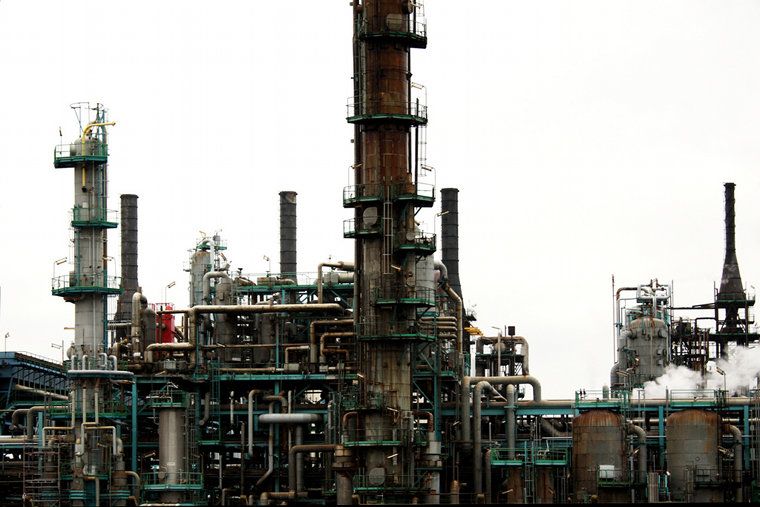
Pipes | Clipon - Dunkerque | © Benoit Deniaud - Flickr
It is only during the second cycle that the conversion of H2S into sulphur is activated. When the temperature is decreased, these gases become liquid; they are sent to storage areas covered with metallic shades, allowing the sulphur to solidify.
We take this mixture for distillation; vapours are collected and condensed in chambers of lead. The collected liquid contains SO2, iron and arsenic and are very difficult to separate then they are kept at 120°C.
The sulphuric acid is obtained by beading with water and we have our sulphur dioxide in gas, liquid or solid form (sulphite, bisulphite and meta-bisulphite).
If the sulphuric acid is mixed potassium salts, it is a core for the production of fungicides, herbicides and new world other –cides!
Sulphur as a volcano extract
Volcano on the island of Java in Indonesia, where Sulphur is extracted from volcanoes © Samuel - Flickr
When the Romans were using this chemical element to preserve the wine, they were extracting it from volcanoes, such as Mount Etna. However due to the massive demand for Sulphur, traders have made huge profit by refining petrol in order to produce of almost the total quantity of Sulphur which is used for the aliments preservation (including wine) and in Sulphuric acid industry (Sulphuric acid).
The new standards for fuels have obliged the manufacturers to extract Sulphur from fossil combustibles. This extraction’s process causes the Sulphur, once burnt, to remain in the atmosphere. And once it gets mixed with rainwater, it turns it into acidic rain.
Nowadays, a full review on the use of Sulphur in wine industry is under way, some winemakers have drastically decreased the doses, and others have completed stopped using it. Sometimes, the quality of the white wine diminishes straight after opening it or when it transported in over heated conditions.
However due to containing natural antioxidants in the form of tannins, the red wine keeps its quality even after opening but its flavour can badly be affected if transported in bad conditions.
Are there any alternatives?
At present, DYNAMIS a group of winemakers from Bordeaux headed by Alain Dejean (Domaine Rousset-Peyraguey) are applying one method of the Romans which is using natural Sulphur.
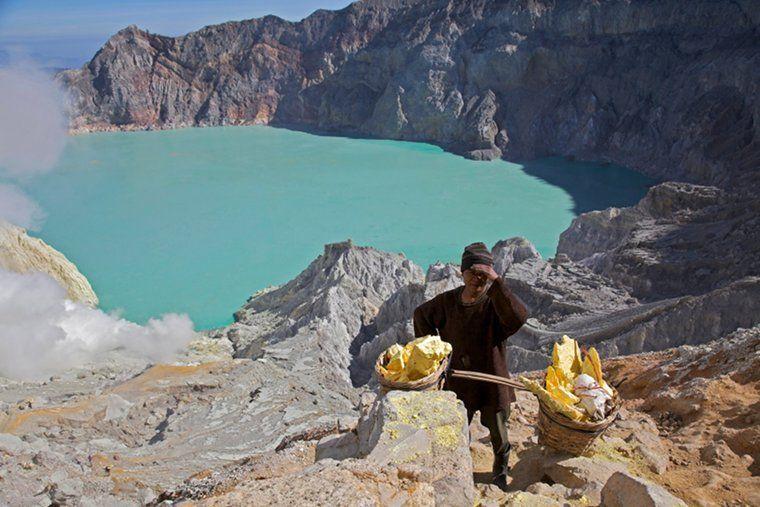
More than 110 pounds on the shoulder to extract volcanic Sulphur in Indonesia! What a human being! © Jean-Marie Hullot
It should be noticed, the Romans did not appreciate the wines as we do.
It should be notice that Romans did not enjoy the taste of wine we know, that is why they used aromatic plants in their drinks. However the Gallics were drinking Romain wines without aromatics. It was transported in a protected environment full of burnt Sulphur before it was stored in barrels.
(This practice has not been fully investigated, but there is a belief that that is how the wine was preserved). The Sulphur is added to wine to protect it while transporting it.
DYNAMIS has a goal of reusing the natural Sulphur for wine, the volcanoes Sulphur extracts should be purified even if it does not contain any traces of Tars or Asenic. It simply improves the quality of the wine. The Sulphur is in charge of diverting the yeasts activities, not destroying them.

Domaine Rousset-Peyraguey located in the heart of Sauternes, the bottom Yquem © Guillaume Bodin
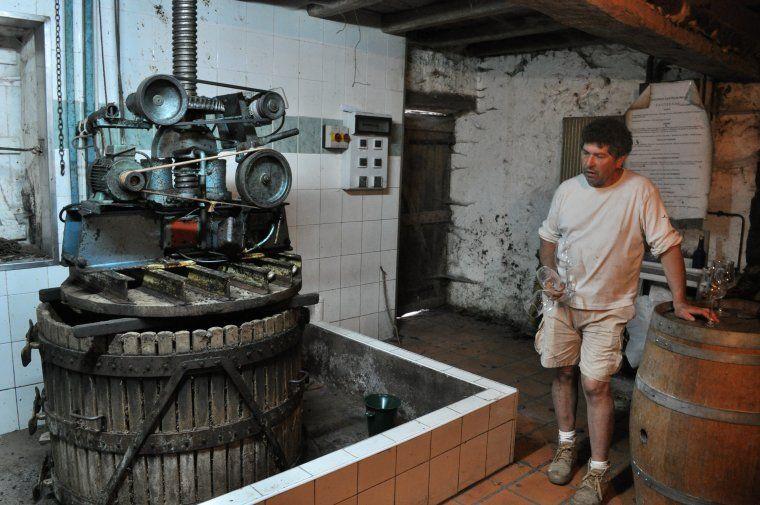
Alain Dejean is the third generation to work in the family Domaine familiale Rousset-Peyraguet © Guillaume Bodin
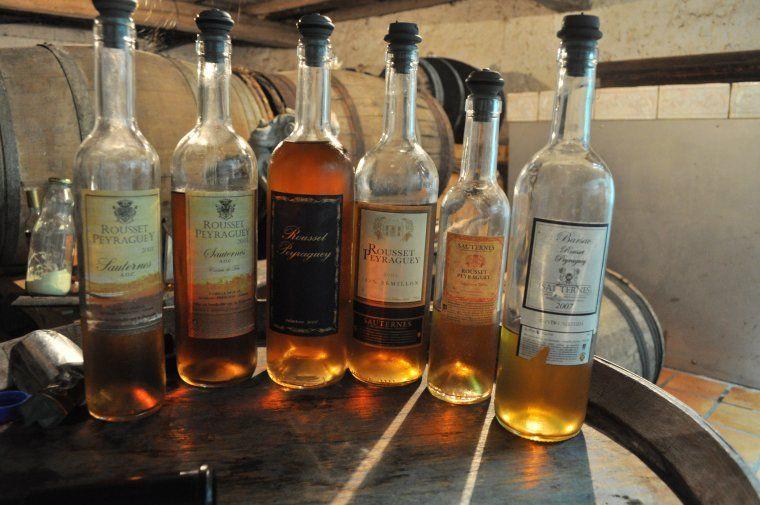
Sauternes "free of Sulphur chemical" Domaine Rousset-Peyraguey © Guillaume Bodin
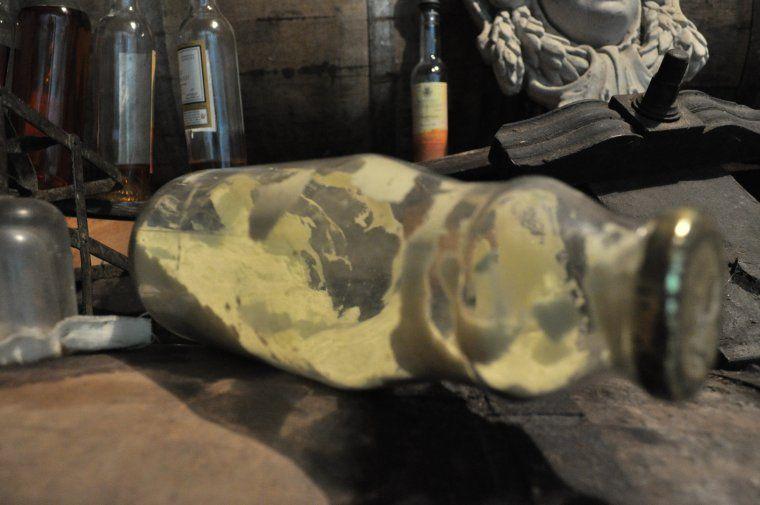
Volcanic sulfur powder after purification © Guillaume Bodin
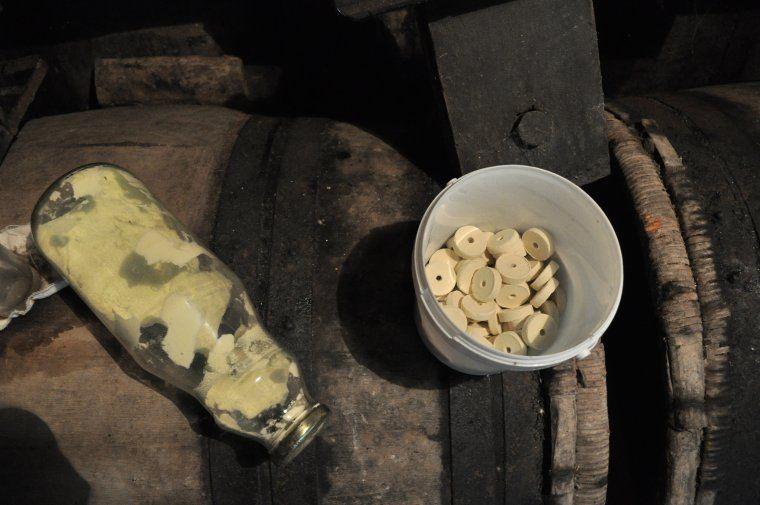
Sulfur volcanic burning compressed pellet © Guillaume Bodin
It took Dynamis group almost two years to understand how to integrate the volcanic Sulphur into blatter without it sticking to the bottom of the barrels.
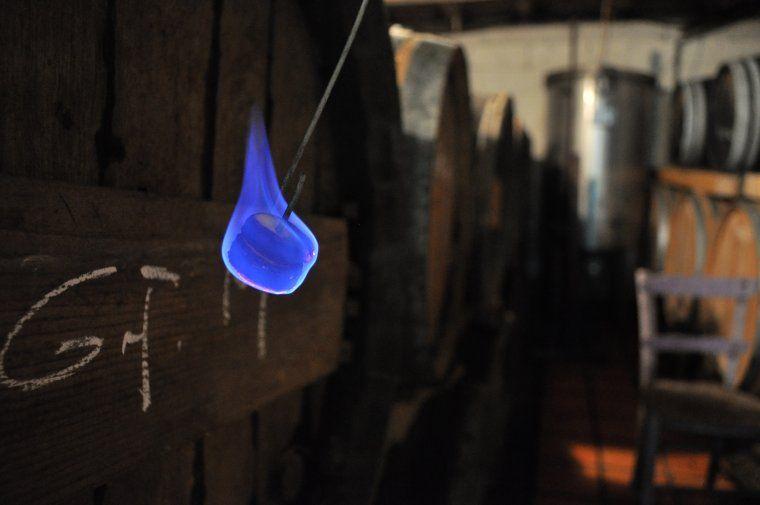
Volcanic Sulphur in action, two years to avoid the pellets from sticking © Guillaume Bodin
In it gas state the Sulphur naturally flows in wine that is why it should be burnt before placing the wine in barrels.
It is a Sulphur that combines very little, it remains predominantly in the Free State is the most active form to limit oxidation and deviations of yeast and bacteria.
To reduce oxidation and any deviations at the level of yeast and bacteria’s, the Sulphur retains its most active form i.e. gas state.
One the opposite of the chemical Sulphur that caused nausea, headaches, advanced symptoms of sickness, the volcanic Sulphur remains very digestive.
Like other issues, solutions are possible but they should be found. People should accept that Sulphur extraction is not a great thing to do. It is widely accepted that normal people are working in the extraction of petrol to produce our chemical Sulphur, but it should also be accepted that the Sulphur extraction is not the best job to carry out.
Tags: wine



